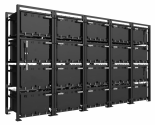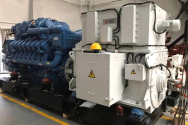Thanks for your analysis. I discussed this with @FairAndUnbiased a while back on the possibility of different motor on 039C. To me, it makes no sense for them to declassify engine/AIP performance on 039B and take 4 more years to develop 039C. A while back, there was speculation that they'd use a mini nuke for 039C, but I don't think that happened here. Based on the shape of the mast, it seems like they want to reduce radar reflection, which could indicate their willingness to recharge frequently. That would only make sense if they were moving to lithium ion batteries (which China is very far ahead in). So, we speculated that they went with either pure LIB or fuel cell + LIB. Stirling AIP doesn't make sense for submarines built in 2020s. Here are things to think about.
I'm not aware of any drawback of the stealthy mast. If there's no drawback (other than development cost), then lower radar signature is a net positive and it doesn't imply an expectation of frequent recharges.
712th Institute does produce a lithium batteries system.

Oh here's another thing I think Type 039C is likely using: permanent magnet synchronous generators. Here's a 2020 press release about a 2mW Chinese PMSG on a civilian ship

2mW happens to be exactly the power output of the MTU 396V16 diesels engine on Type 039s, and a 2020 installation on a civilian ship also fits the timeline of Type 039C's development. Since PMSGs are much smaller, lighter, quieter and more efficient than traditional alternators, I consider it highly likely that Type 039C uses this technology. I won't rate it as almost certain because it's developed by CRRC, the high speed train maker, not CSSC.
The news release says the PMSG is compatible with four different diesel engines. My bet is on MTU 396V16 and CHD 620V16CR are two of the four. I don't know if Type 039C uses CHD 620V16CR, but using CHD620 would help Chinese SSK exports and contribute to future development of China's domestic diesel engines. 4 x MTU, 4 x CHD or a mix of 2 MTU and 2 CHD are all possible, I think. I bet if the first 039C uses all MTU there will be later ships with CHD. I think it's likely that China has offered a PMSG upgrade to the Thailand, perhaps even at no additional charge and that's why Thailand has indicted it's considering CHD620.
To sum up, potential new power/propulsion technologies on Type 039C
1. 5mW PMM: significant advantages (space and endurance, quietness, mobility - faster acceleration because PMM packs a lot of torque!), no drawback.
Evidence: development timeline, power rating, official news report, 712th Institute involvement.
My assessment: almost certain.
2. 140 kW x3 fuel cell AIP: significant advantages (space and/or endurance, quietness, mobility - higher output so charges the batteries faster), different safety tradeoffs compared to Stirling engine .
Evidence: development timeline, power rating, securities research report, 712th Institute involvement.
My assessment: almost certain.
3. Lithium batteries: significant advantages (space and/or endurance, mobility - faster charging and higher output) , safety drawbacks compared to lead acid.
Evidence: development timeline, 712th Institute involvement.
My assessment: likely.
4. 2mW x 4 PMSG: significant advantages (space and endurance, quietness, mobility - higher efficiency = higher output with the same prime mover = faster charging), no drawback.
Evidence: development timeline, power rating.
My assessment: highly likely.
If 039C ticks all four, it's on the cutting edge of conventional submarine propulsion.
Here's a real-life story. My parents' place uses Xiaomi's smart home ecosystem, I use Huawei's HiLink. I bought two smart fans for the recent heat wave, one from each ecosystem. Xiaomi's fan has VFD controlled PMM and my HiLink fan has VFD controlled induction motor. The difference in noise levels at the lowest fan speed (where the fan blades move slowly and motor noises dominate) is just night and day. Noise from the PMM is completely imperceivable for me and I hear the induction motor from a meter away.The winding we are so used to in electric motors has been replaced by permanent magnets (PM). The Type 212 submarine (used by the German and Italian navies) and the Type 214 (used by Greece, Portugal, and South Korea), use the Siemens Permasyn PM Motor. This motor, says Jurgen Rohweder, “has particularly low vibrations and emits little heat and noise, which together further contribute to a submarine’s undetectability.”
